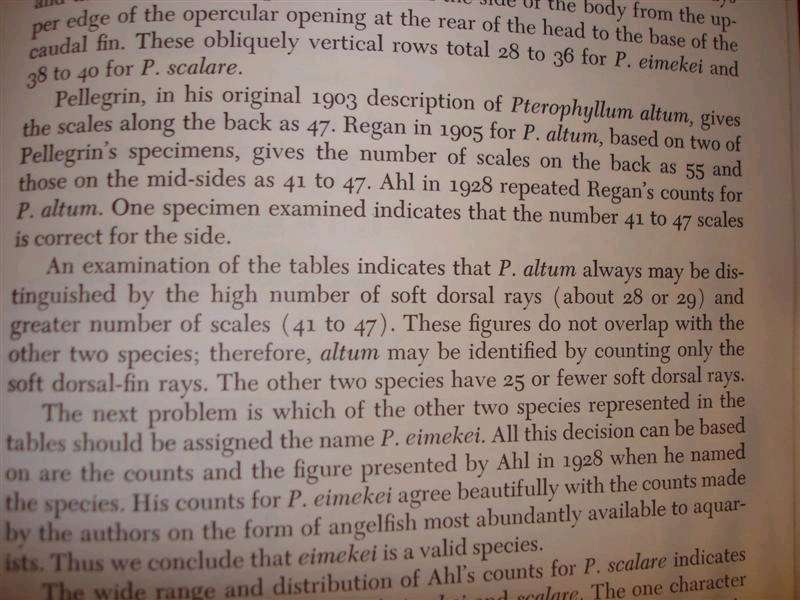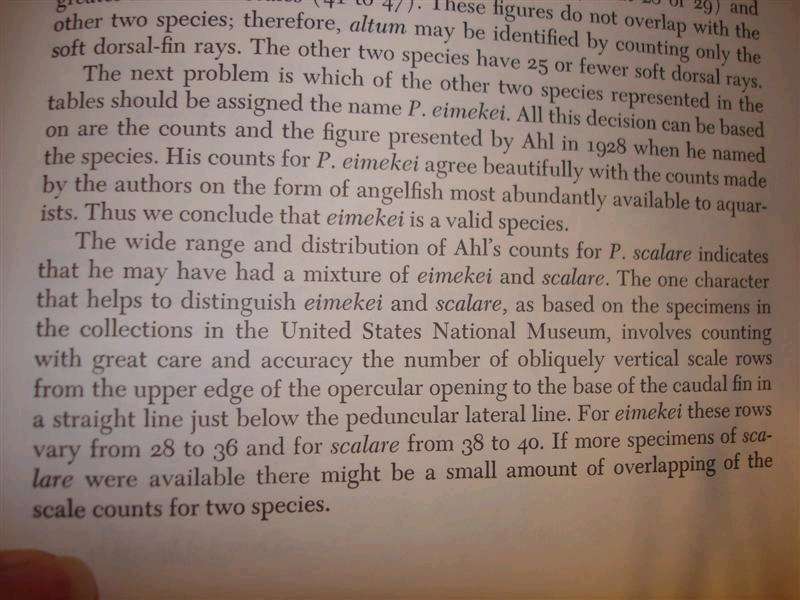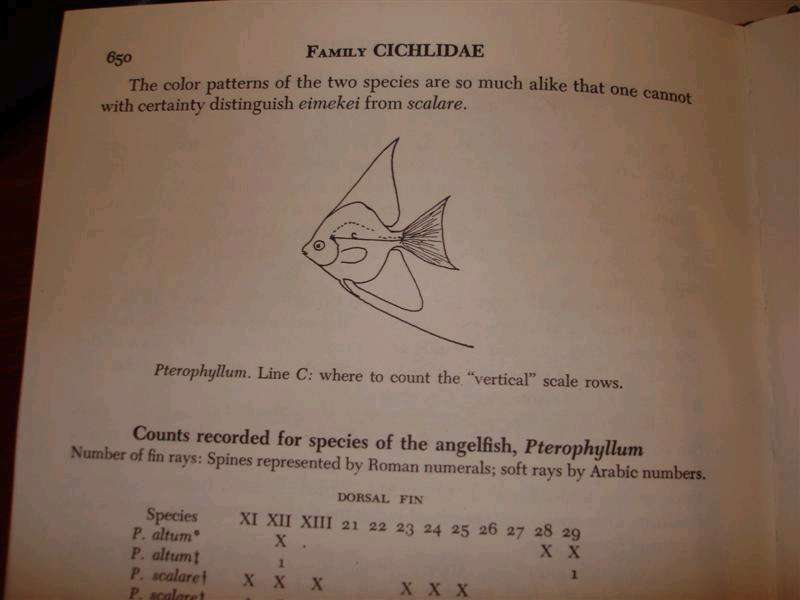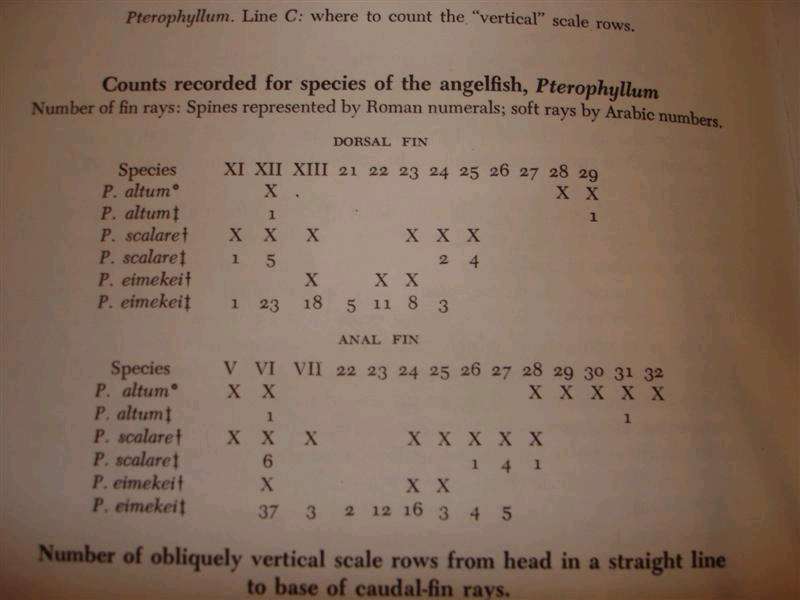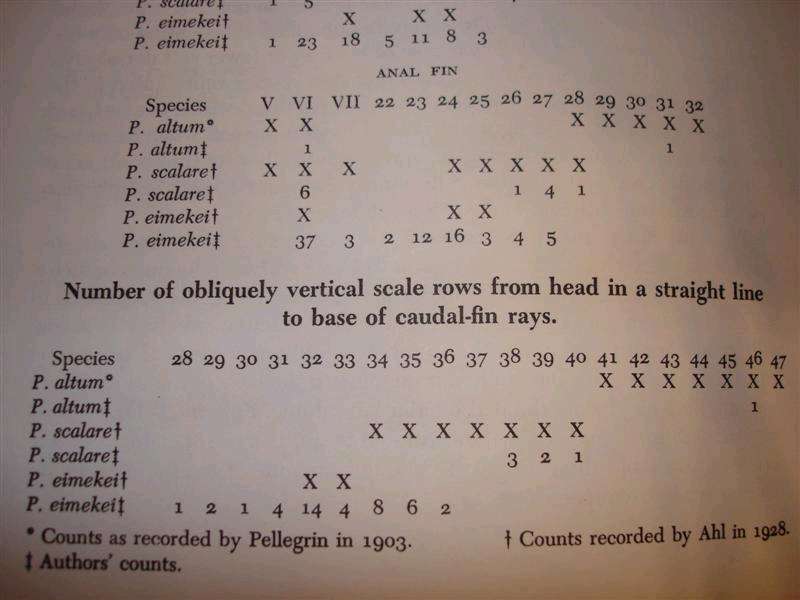waterdrop
Enthusiastic "Re-Beginner"
I would so much appreciate all of your thoughts and bits of insight into how angels have come to be what we see out there today. I don't know the best way to organize my thinking about this. I guess I would like to confirm what species are out there and what might have originally been imported for aquarists when the hobby was beginning.
Then I'm imagining it would be nice to understand the phenotypes and what mix of wild caught and captive bred activities that proceeded over the years. Do those of you that like and follow angelfish as a breed have a set of phenotypes that categorize the looks that are seen and help reduce the confusion of what all is out there? Don't know them all? - Please throw out the types of looks you think might be a phenotype or that you do know of.
And beyond that I'm sort of interested in getting a feel for the history of how this spread out from the early beginnings, perhaps being mostly wild caught and retaining limited phenotypes for certain decades and then at some point greatly fanning out to all the phenotypes and captive bred ones we see today.
------------
About species I only know this.
About phenotypes, I'm familiar with the traditional vertical stripe patterns, the black variations, the fact that veil tails were then seen in both these colorations, and that this relatively narrow set of looks seemed to be all that was around for some decades (I have kept many of these in earlier years). Then there began to be various looks that seemed to be varying amounts of loss of the vertical stripes and albino characteristics being mixed in. Then finally I seem to see lots of solid colorations and even the bit of (Koi?) orange up at the head. Anyway, I feel quite ignorant of the details but am trying to describe the little bits I know so far.
I suppose someone will say I need to wait for Tolak to see this. It would be just wonderful if he and any other angel hobbyists could say hello and that they've seen this. Then they could perhaps add a few paragraphs of memories when they had time. I'm also thinking some of you may have links or book recommendations or anything else.. (or perhaps their will just be a collective sigh of silence ) No one's comments would be too small, don't want all the words to put anyone off, its really simple in the idea as I'm sure some of you have watched it happen over the years or heard of it. Plus I'm only recently back to the hobby and probably don't know the extent of colors and patterns now in angelfish.
) No one's comments would be too small, don't want all the words to put anyone off, its really simple in the idea as I'm sure some of you have watched it happen over the years or heard of it. Plus I'm only recently back to the hobby and probably don't know the extent of colors and patterns now in angelfish.
~~waterdrop~~
Then I'm imagining it would be nice to understand the phenotypes and what mix of wild caught and captive bred activities that proceeded over the years. Do those of you that like and follow angelfish as a breed have a set of phenotypes that categorize the looks that are seen and help reduce the confusion of what all is out there? Don't know them all? - Please throw out the types of looks you think might be a phenotype or that you do know of.
And beyond that I'm sort of interested in getting a feel for the history of how this spread out from the early beginnings, perhaps being mostly wild caught and retaining limited phenotypes for certain decades and then at some point greatly fanning out to all the phenotypes and captive bred ones we see today.
------------
About species I only know this.
About phenotypes, I'm familiar with the traditional vertical stripe patterns, the black variations, the fact that veil tails were then seen in both these colorations, and that this relatively narrow set of looks seemed to be all that was around for some decades (I have kept many of these in earlier years). Then there began to be various looks that seemed to be varying amounts of loss of the vertical stripes and albino characteristics being mixed in. Then finally I seem to see lots of solid colorations and even the bit of (Koi?) orange up at the head. Anyway, I feel quite ignorant of the details but am trying to describe the little bits I know so far.
I suppose someone will say I need to wait for Tolak to see this. It would be just wonderful if he and any other angel hobbyists could say hello and that they've seen this. Then they could perhaps add a few paragraphs of memories when they had time. I'm also thinking some of you may have links or book recommendations or anything else.. (or perhaps their will just be a collective sigh of silence
 ) No one's comments would be too small, don't want all the words to put anyone off, its really simple in the idea as I'm sure some of you have watched it happen over the years or heard of it. Plus I'm only recently back to the hobby and probably don't know the extent of colors and patterns now in angelfish.
) No one's comments would be too small, don't want all the words to put anyone off, its really simple in the idea as I'm sure some of you have watched it happen over the years or heard of it. Plus I'm only recently back to the hobby and probably don't know the extent of colors and patterns now in angelfish.~~waterdrop~~


 /theangelfishsociety.org/articles/no...r_norton(1).htm
/theangelfishsociety.org/articles/no...r_norton(1).htm

